Perfecting the Art of Receiving and Trapping a Rolling Ball in Soccer
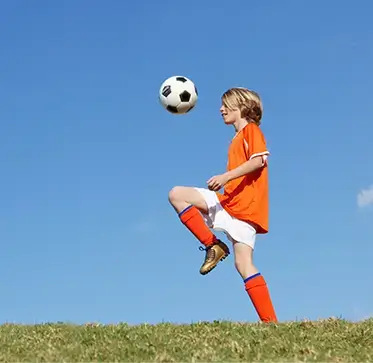
CRFC BLOGS
LATEST BLOGS & NEWSLETTERS
Perfecting the Art of Receiving and Trapping a Rolling Ball in Soccer
In soccer, the ability to receive and trap a rolling soccer ball effectively is a fundamental skill that young players must master early in their careers. This soccer ball-trapping skill is not just about stopping the ball; it involves evaluating the space around the player, understanding the game’s dynamics, and using the right technique to control the soccer ball in a direction and space that’s beneficial for the current play. A significant emphasis is to be paid to this process of ball control and reception, integrating it with foundational skills such as the magic hop and proper receiving foot placement. Through a variety of soccer training drills, we aim to equip our young players with the ability to master this essential skill.
The Importance of Receiving and Trapping The Soccer Ball
Being adept at receiving and trapping a rolling soccer ball allows players to maintain possession under pressure, make quick decisions, and execute effective plays. It’s a skill that combines physical ability with mental acuity, as players must constantly assess their environment and choose the best course of action within seconds.
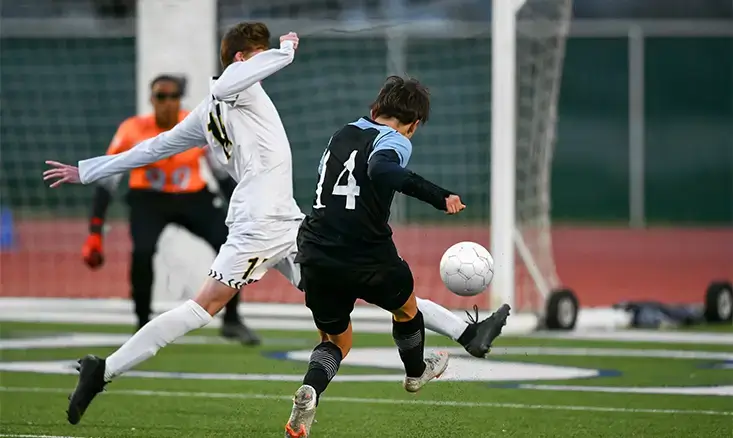
Soccer Trapping Drills
To foster these skills, training programs must include soccer trapping drills that start simple but gradually increase in complexity as players improve. Here’s a look at some of the drills we use to teach and perfect receiving and trapping a rolling ball:
Partner Passing Drills
Using a partner for soccer passing drills is an excellent way for young players to practice receiving and trapping the soccer ball. Simple passing and moving exercises help players get accustomed to the ball’s pace and learn how to adjust their bodies and feet to control the ball effectively.
Cone Drills for Receiving
Cones are a versatile tool in the soccer training arsenal. Drills are set up in a way that requires players to receive the soccer ball and navigate through cones, simulating game-like scenarios. These exercises help improve players’ spatial awareness, ball control, and ability to move with the ball under control.
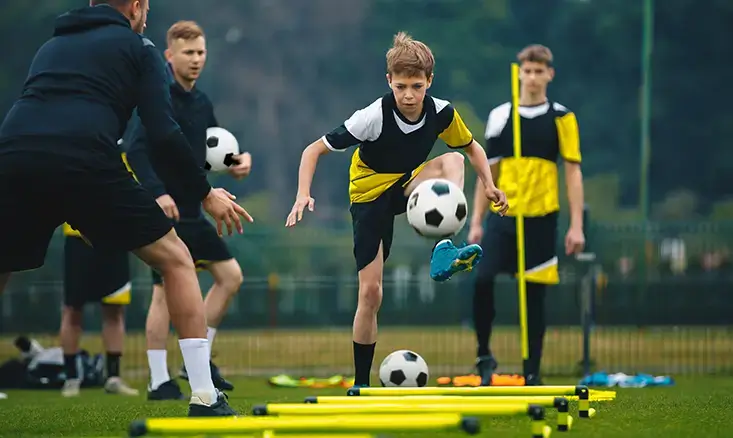
Adding Pressure
As players become more comfortable with the basics, pressure is introduced from different directions. This could involve defenders attempting to intercept the pass or creating scenarios where players must receive and trap the soccer ball under closer scrutiny. This addition helps simulate the pressure of an actual game and teaches players how to maintain control in tight situations.
Receiving Throw-ins
Special attention is given to receiving soccer throw-ins, a common yet sometimes overlooked aspect of soccer. These drills focus on the proper positioning and technique to receive a ball out of the air, thrown from the sidelines. This ball-receiving soccer drill emphasizes the importance of readiness and quick adaptation to continue the play smoothly.
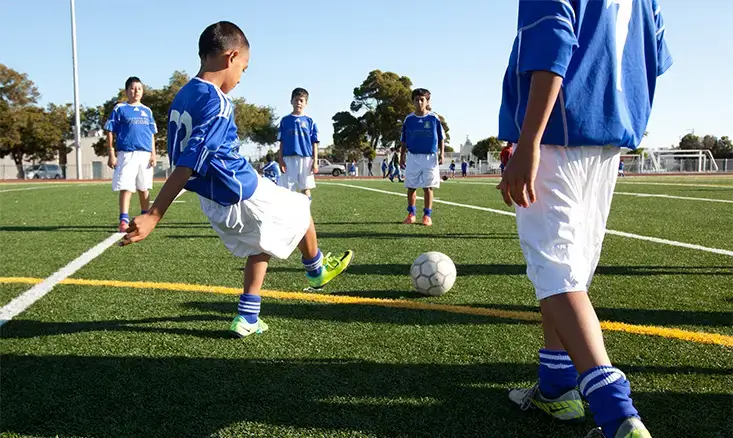
Beyond the Drills
While soccer ball trapping drills are crucial for developing technical skills, the ultimate goal is to integrate these abilities into a cohesive playing style. Our coaches at Charlotte RISE FC focus on teaching players not just the mechanics of receiving and trapping a rolling ball but also the strategic elements of using these skills during matches. This includes understanding when to hold the ball, when to pass, and how to use space effectively.
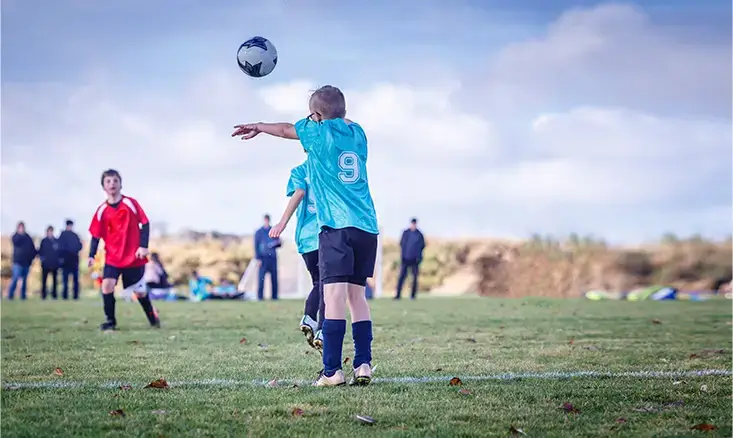
Conclusion
Mastering the skill of receiving and trapping a rolling soccer ball is essential for any young soccer player looking to excel in the sport. At Charlotte RISE FC Summer soccer camps , our comprehensive soccer training drills, designed to build on foundational skills like the magic hop and correct foot placement, are crucial steps towards achieving this mastery. Through dedicated practice and strategic application of these skills in game scenarios, our players develop the confidence and competence to control the ball in any situation, setting the foundation for a successful soccer career.
We’re rolling out an exciting series for young soccer players to elevate their game, starting with the foundational Ball Control to set the stage for skill development. As players gain confidence, we’ll dive into Kick and Catch, then explore the Magic Hop. Our journey continues with Trapping of a Ball, focusing on precise ball-stopping techniques. We wrap up with Receiving and Trapping a Rolling Ball, teaching key skills every aspiring soccer player needs to know.
The video of this skill is coming soon.
FAQs
What is the importance of mastering ball reception and trapping in soccer?
Mastering soccer ball receiving and trapping is crucial for maintaining possession, making quick decisions, and executing effective plays under pressure, blending physical and mental abilities.
What are some effective soccer drills for improving ball reception and trapping skills?
Effective soccer ball trapping drills drills include partner passing drills, cone drills for spatial awareness, adding pressure scenarios, and specialized training for receiving throw-ins, all aimed at refining control and decision-making on the field.
How do soccer coaches integrate ball-trapping skills into players' overall playing style?
Coaches focus not only on the mechanics of trapping but also on strategic elements, teaching players when to hold the ball, when to pass, and how to utilize space effectively to enhance their overall gameplay.
Why is mastering ball reception and trapping essential for young soccer players' development?
Mastering these soccer ball receiving and trapping skills sets a strong foundation for young players, enabling them to confidently control the ball in various game situations, ultimately contributing to their growth and success in soccer.
What distinguishes Charlotte RISE FC's approach to training in ball reception and trapping?
Charlotte RISE FC emphasizes comprehensive training drills that build on foundational skills, ensuring players develop both technical proficiency and strategic understanding to excel on the field.

Did you find this useful?


